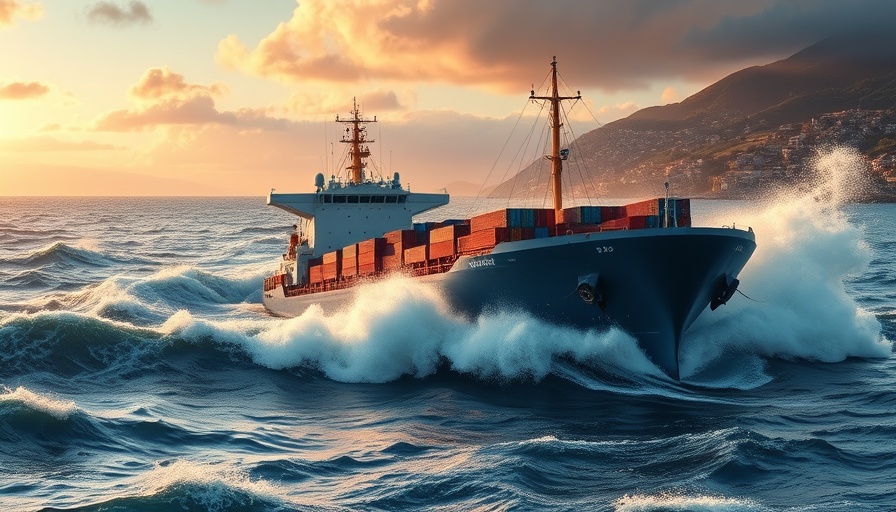
The Majesty and Terror of Rogue Waves
The open ocean, while often serene, can become a harrowing place in moments split by the tumult of nature. Recent footage has surfaced, showing colossal cargo ships bravely facing waves soaring up to an astonishing 65 feet high. In an unsettling compilation, these giant vessels ride the furious swell, capturing the breathtaking yet terrifying showdown between human engineering and the raw power of the sea.
Understanding Kenophobia: The Fear of Open Spaces
The feeling of vulnerability in the wide expanse of the ocean is not merely psychological—it's a phenomenon known as kenophobia, a fear that emerges in open spaces devoid of structure. When massive rogue waves strike, this feeling can escalate, stirring fear even in the most seasoned sailors. Such waves can rise dramatically during storms, creating conditions that can push even the utmost resilient vessels and their crews to their limits.
The Engineering Behind Resilient Ships
Modern cargo ships are marvels of engineering. Equipped to withstand the fiercest Category 12 Beaufort storms, these ships serve as a testament to human ingenuity. But just how strong are they? With their hulls crafted uniquely to face enormous waves and high winds, the ships showcased in the video reveal how essential navigation skills and crew courage are in serenely steering through the chaos of nature.
What Goes Into the Making of a Cargo Ship?
While heavy construction and advanced materials contribute to a ship's ability to weather storms, it's the design of the vessels that plays a critical role. Cargo ships feature reinforced structures, bulbous bows to minimize wave impact, and stabilizing fins for better handling in rough waters. However, beyond the mechanics, it's the crew's skills and nerves of steel that guide these ships safely across the greatest oceanic challenges.
Lessons from the Footage: Adventure Awaits
For those with a thirst for adventure, watching these ships battle treacherous waves can inspire the pursuit of daring aquatic experiences, such as sailing or deep-sea fishing. But it’s essential to approach such endeavors with respect for the ocean’s might. Understanding the risks involved can transform fear into respect, igniting passions for exploration without compromising safety.
Why Sharing Stories of Adventures Matters
In sharing these tales of ferocious sea conditions and human courage, there’s an inherent value in community building. Every story holds the potential to inspire others to confront their fears, seek their own adventures, and develop a deeper appreciation for nature. Plus, it highlights the need for sound safety practices when engaging with water sports, encouraging enthusiasts to equip themselves with the knowledge and tools necessary for every voyage.
Practical Tips for Boating in Rough Seas
For those who might find themselves on the open water during inclement weather, here are a few essential tips to keep in mind:
- Stay Informed: Always check weather conditions before heading out.
- Know Your Vessel: Understand the capabilities of your boat and how it behaves in rough waters.
- Staying Calm: In a storm, panic can exacerbate the situation. Maintain focus and make informed decisions.
Each journey on the water comes with variables, but being prepared can make all the difference when faced with unexpected trials.
Final Thoughts: Embracing the Beauty and Dangers of the Sea
The spectacular visuals of cargo ships wresting with rogue waves remind us of both the beauty and the potential brutality of the oceans. Next time you feel that pinch of anxiety at the thought of these deep, endless waters, remember the stories of resilience and courage they contain. Whether you’re a sailor or simply an admirer of the ocean's splendor, let these moments inspire a deeper connection with the world of water sports.
 Add Row
Add Row  Add
Add 




Write A Comment